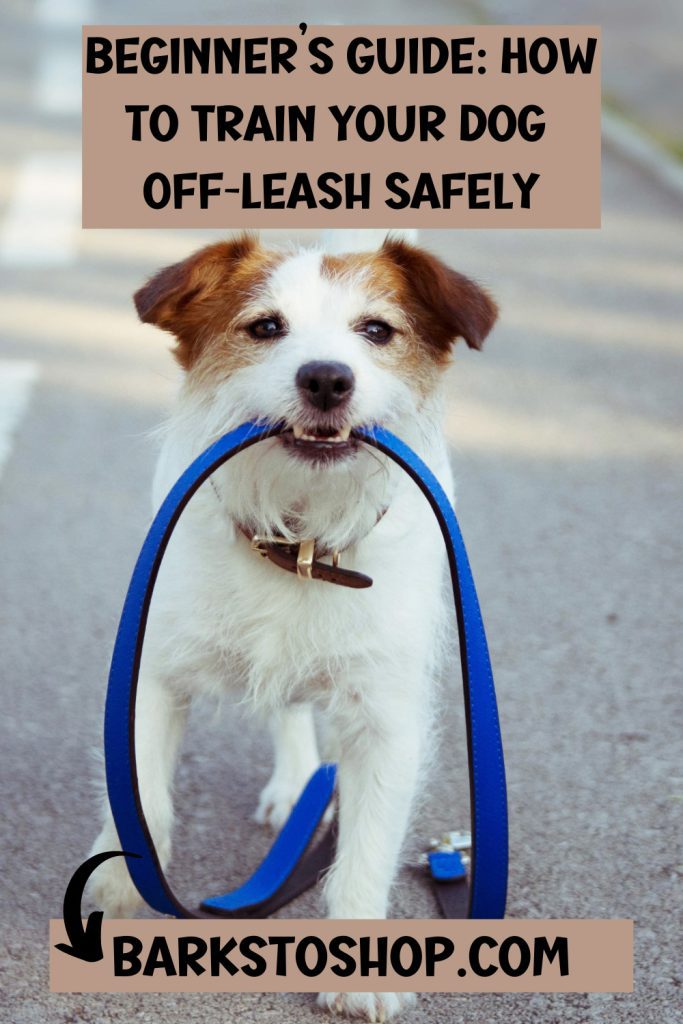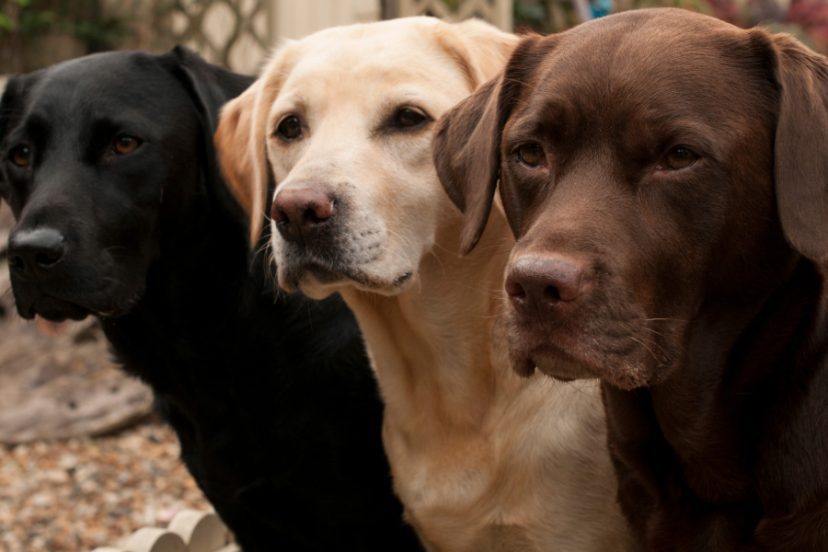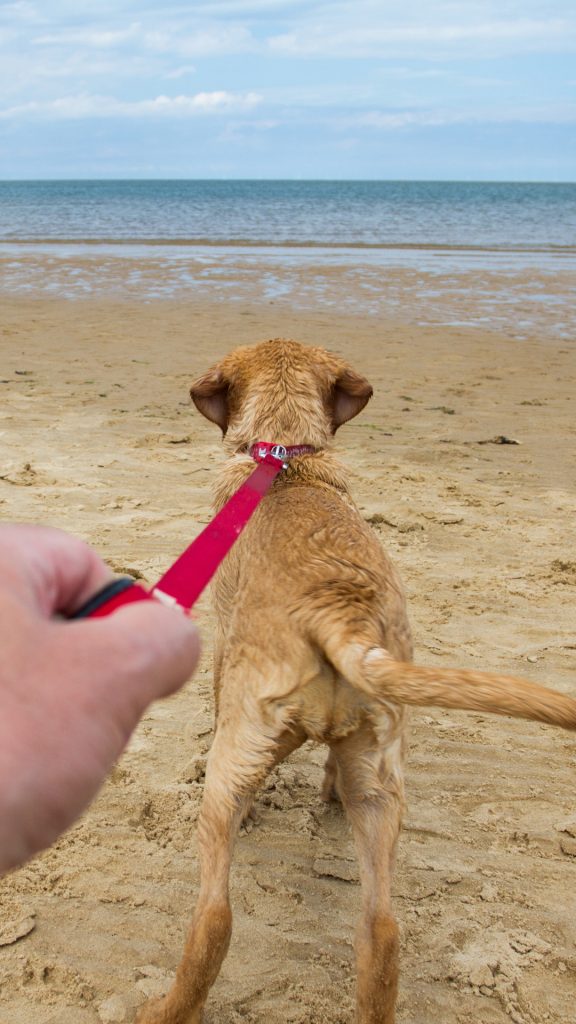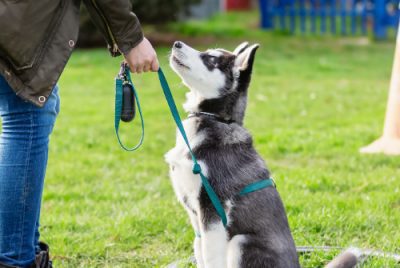Beginner’s Guide: How to Train Your Dog Off-Leash Safely
Post Disclaimer
We may earn a commission for purchases made using our links. Please see our Disclaimer to learn more.
Master Off-Leash Dog Training: A Beginner’s Guide
What are the benefits of training your dog to walk off-leash?
Training your dog to walk off-leash can strengthen your bond, improve communication, boost their confidence, and provide mental stimulation. It also allows them to enjoy more freedom and exercise in a controlled manner while reinforcing good behavior and responsiveness to commands.
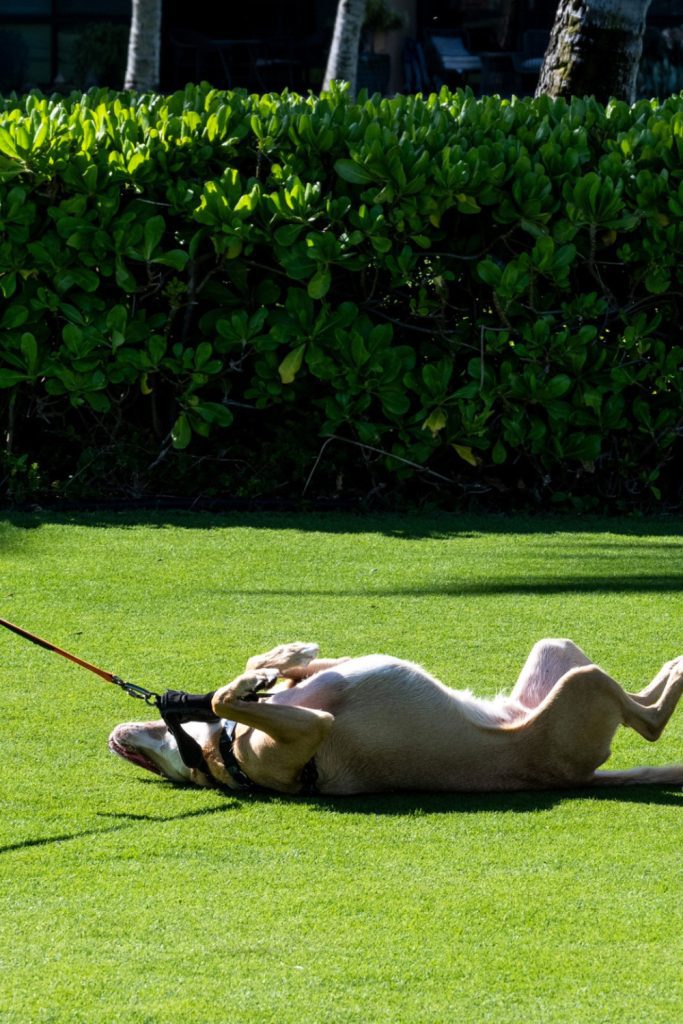
Key Highlights
- Off-leash dog training is an advanced form of training that allows your dog to enjoy freedom while remaining safe and under control.
- Building a solid foundation of basic obedience commands is crucial before starting off-leash training.
- Positive reinforcement techniques, such as rewarding your dog with treats and praise, are highly effective in off-leash training.
- Successful training sessions require the right equipment, including a long leash and a well-fitted harness.
- Patience, consistency, and a deep understanding of your dog’s personality are essential for achieving your off-leash training goals.
Introduction
Dog training is more than just teaching basic obedience training and basic commands, including your dog’s obedience. It is about creating a solid bond with your furry friends and keeping them safe. Off-leash dog training can feel free, but it needs a clear plan and a good understanding of your dog’s personality. This comprehensive guide will help you understand the details of off-leash training. It will give you helpful tips and steps to ensure you succeed while keeping a safe environment for your pet.
Understanding Off-Leash Dog Training
Off-leash dog training means teaching your dog to listen to commands and behave well even when not on a leash. Remember, just because you train off-leash doesn’t mean leash laws are unimportant. Always follow local rules about keeping your dog on a leash in public areas.
Knowing your dog’s personality is important before starting this training. Consider their breed, temperament, and past experiences that could affect their actions. Knowing this will help you choose the correct training method, allowing you to have a good and successful experience with your dog.
The Benefits of Training Your Dog Off-Leash
Training your dog to go off-leash has many benefits. It helps your dog feel better and promotes good behavior that strengthens your bond. When your dog learns off-leash commands, it experiences freedom and independence. Dogs are pack animals that thrive under guidance. At the same time, they stay safe because you are guiding them. This freedom lets them explore, use their energy, and engage their instincts.
Positive reinforcement is very important in off-leash training. Rewarding your dog with praise, treats, or playtime for following commands creates a positive association with training, encouraging them to keep up the good behavior.
Off-leash training also helps improve your relationship with your dog. It involves clear communication, trust, and respect, strengthening your connection, and building a great partnership.
Identifying If Your Dog Is a Good Candidate for Off-Leash Training
Not all dogs should start off-leash training right away. It’s important to check your dog’s obedience and temperament first. Good candidates for off-leash training follow basic commands like sit, stay, come, and heel. They should be able to do this in places with some distractions.
Also, pay attention to how your dog acts around other dogs and people. Dogs that show aggressive tendencies or get upset easily might need special training. These dogs may not be good candidates for being off-leash. The safety of your dog and others is very important.
If you are unsure if your dog is ready, talking to a certified dog trainer can help. A professional can look at your dog’s behavior and spot any problems. They can also suggest training programs that fit your dog’s needs.
Preparing for Off-Leash Training: What You Need
Transitioning to off-leash training requires good planning and preparation. A strong base in basic obedience and the right equipment to choose a suitable training place is important. These steps are key to helping your dog succeed.
Focusing on these details can create a positive space for learning. Your furry friend can grow and learn to enjoy being off-leash.
Essential Equipment for Off-Leash Training
Having the right gear is critical for your off-leash training sessions. A long leash, which is usually 10 to 30 feet long, is important. It gives your dog some freedom but still helps you keep control. This way, they can explore more but stay connected to you.
Use a well-fitting harness instead of putting the leash on your dog’s collar. A harness spreads the pressure better across the body, helping avoid strain on the neck, especially when your dog pulls or lunges.
Remember to have high-value treats ready! Treats can motivate your dog during positive reinforcement training. Pick small and tasty treats. This will keep your dog interested and happy to learn during training sessions.
Setting Up a Safe Training Environment
Choosing the right training area is crucial for safe and successful off-leash training. For the first-time sessions, start with a controlled environment. This helps reduce distractions and dangers. Your fenced backyard is a great place to begin, especially for off-leash training for the first time. It is a familiar and safe spot for your dog to get used to the long leash and practice basic commands without outside distractions.
As your dog learns, slowly add more challenging environments. During less busy times, you could use a quiet dog park or a quiet hiking trail. By increasing the distractions bit by bit, you help your dog use what it has learned and stay focused even when things get busier.
Always remember that a safe environment makes a big difference in training. It helps ensure a good experience for your dog and lowers the risk of accidents. This way, your dog can build their confidence while training.
A Step-by-Step Guide to Off-Leash Training
Training a dog to be off-leash takes time and care. You need to be patient and consistent while using a positive method. This guide will help you follow precise steps to train your dog without a leash. It ensures a safe and happy experience for both you and your dog.
Keep in mind that each dog learns at its own speed. Changing your training style to fit your dog’s needs is important. Celebrate small successes together. This helps keep them motivated and excited.
Step 1: Establishing Basic Obedience Commands
Building a solid fundamental obedience command base is the key to successful off-leash training. Before letting your dog off-leash, ensure they know commands like sit, stay, come, and heel, with or without a leash.
Start practicing these commands in a calm place with few distractions, like your home or backyard. Use positive reinforcement techniques by rewarding your dog with praise, treats, or a fun game of fetch when they listen well, as this helps reinforce the desired behavior. Leash training is important because it helps your dog learn to follow commands while on a leash.
Being consistent during this time is very important. Practice these commands often. Slowly increase your practice length and distance, and add small distractions as your dog improves. This builds their responsiveness and sets the stage for successful off-leash training.
Step 2: Introducing the Long Leash Technique
Once your dog listens well to basic commands on a regular leash, you can start using a long leash. A long leash helps your dog feel more independent while keeping some control and safety.
Start in a safe space. Let your dog get used to the longer leash. As they explore further, practice recalling commands like “come” or “here.” Be cheerful and supportive. Use positive reinforcement techniques to reward them when they come back.
As your dog gets used to it, slowly let them move farther away and add light distractions. The long leash helps you guide them back if they get distracted or go too far. This way, your dog can enjoy their freedom without learning anything negative.
Step 3: Gradually Increasing Freedom
After you learn the extended leash technique, you can slowly give your dog more freedom. It is important to move slowly. Check how your dog responds and feels at each step before going to the next one.
Start by letting your dog spend more time off-leash in safe places. Then, slowly take them to areas that have more distractions. Watch their body language closely during these times. If you see any signs of stress or worry, like heavy panting, tail tucking, or wanting to avoid things, it’s best to go back to an earlier step and go in the opposite direction, focusing on training again.
Keep in mind that off-leash training is a journey, not a goal. Practice regularly, even after your dog is reliable. This will help keep their skills sharp and ensure their safety and happiness in the long run.
Conclusion
Off-leash dog training is more than just giving your dog freedom. It is also about keeping them safe and bonding with them. This journey requires patience, consistency, and understanding of your dog’s behavior. If you follow the steps in this guide, you can build a happy relationship with your dog. This allows them to enjoy their freedom responsibly. Remember, every dog is different so that progress can look different for them. Stay positive and celebrate the small wins. Always put your dog’s well-being first. With love and hard work, you will soon be happy to see your dog thrive off-leash.
Frequently Asked Questions
Q: How long does it take to train a dog off-leash?
The time it takes to train a dog to be off-leash can vary greatly. This depends on several factors, such as the dog’s age, breed, personality, and past training. Some dogs might learn quickly. They can show good behavior in just a few weeks. However, other dogs may need months of consistent training programs to build positive habits and behave well off-leash.
Q: Can all dog breeds be trained to walk off-leash?
Most dog breeds can learn basic obedience skills and leash training. However, not all breeds are suitable for off-leash walking. Herding breeds or those with a strong prey drive may need more control because of their instincts. Always think about your dog’s unique traits. If needed, talk to a professional. Also, get to know your area’s leash laws and local regulations.
Q: What should I do if my dog runs off when off-leash?
Suppose your dog gets away while off the leash; stay calm and don’t chase them. Instead, call their name and use a recall command you often use. If they don’t come back, stay where you are and try to get their attention. Always focus on the safety of your dog and other people. Follow leash laws and practice recall commands regularly during training sessions.
